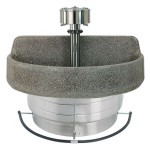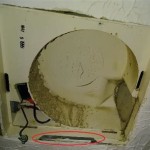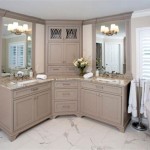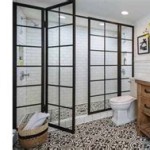Good Bathroom Sink Taps: A Guide to Choosing the Right Ones
A bathroom sink tap, often referred to as a faucet, is a seemingly simple fixture, yet it plays a crucial role in the functionality and aesthetics of a bathroom. Choosing the right bathroom sink taps can significantly enhance the user experience and complement the overall design of the space. This guide will delve into the key considerations for selecting good bathroom sink taps, ensuring you make an informed decision that meets your specific needs and preferences.
1. Functionality and Design
Functionality and design are inextricably linked when choosing bathroom sink taps. You need taps that are not only aesthetically pleasing but also practical for everyday use. Consider the following factors:
Tap Style: Bathroom sink taps come in various styles, including single-lever, two-handle, and sensor-activated. Single-lever taps offer simplicity with a single lever controlling both hot and cold water flow. Two-handle taps provide greater control over temperature and flow rate separately. Sensor-activated taps offer hands-free operation, enhancing hygiene and contributing to modern bathroom aesthetics.
Spout Reach: The reach of the spout is crucial for ease of use. Consider the size of your sink and the space available around it. A longer spout offers greater flexibility, while a shorter spout might be more suitable for smaller sinks.
Flow rate: The flow rate determines how quickly water flows from the tap. A higher flow rate provides a more powerful stream, but it can also increase water consumption. Consider your water usage habits and choose a flow rate that balances efficiency and convenience.
Water Pressure: Water pressure affects the functionality of the taps. Lower water pressure might require choosing taps with a higher flow rate to ensure adequate water flow. Consult your local plumbing professional to determine the water pressure in your home.
2. Material and Finish
The material and finish of bathroom sink taps significantly impact their durability, aesthetics, and maintenance requirements. Here are some common options:
Material:
- Brass: Durable and corrosion-resistant, brass is a popular choice. It can be polished to achieve various finishes.
- Stainless Steel: Known for its sleek appearance and durability, stainless steel is a modern and hygienic option. It is also resistant to corrosion and staining.
- Chrome: A classic and versatile finish, chrome offers a sleek and reflective appearance. It is easy to clean and maintain.
- Nickel: A durable and sophisticated finish, nickel provides a warm and elegant look. It is also resistant to corrosion and scratches.
Finish:
- Polished Chrome: A highly reflective finish, polished chrome offers a classic and sleek appearance.
- Brushed Nickel: A matte finish with a subtle textured appearance, brushed nickel provides a more contemporary and understated look.
- Oil Rubbed Bronze: A warm and rich finish, oil rubbed bronze adds a touch of rustic elegance.
Choosing the right material and finish depends on your aesthetic preferences and the overall design of your bathroom. Consider the existing fixtures and color scheme to ensure a cohesive and harmonious look.
3. Installation and Maintenance
Installation and maintenance are crucial factors to consider. Some taps are easier to install than others, and some require specialized tools or expertise. The maintenance requirements of different materials and finishes also vary. For instance, chrome taps are generally easier to clean than brushed nickel or oil rubbed bronze. It is important to research the specific requirements for your chosen taps before purchasing.
Installation:
- DIY Installation: Some taps are designed for DIY installation and come with clear instructions. However, if you are not comfortable performing plumbing work, it is best to hire a professional plumber.
- Professional Installation: Professional installation ensures correct installation, preventing leaks and other potential issues. Hiring a licensed plumber also guarantees warranty coverage remains valid.
Maintenance:
- Regular Cleaning: Regular cleaning helps to prevent mineral build-up and maintain the functionality and appearance of the taps. Use a mild cleaning solution and a soft cloth to clean the taps.
- Descaling: Hard water can cause mineral build-up, restricting water flow. Consider using a descaler solution to remove mineral deposits and maintain optimal performance.
- O-ring Replacement: O-rings are rubber seals that prevent leaks. Over time, they can wear out. Replacing them periodically can prevent leaks and extend the lifespan of the taps.
By considering these factors, you can choose good bathroom sink taps that enhance the functionality, aesthetics, and longevity of your bathroom space. Remember, quality taps are an investment in your bathroom's comfort and style.

Best Bathroom Taps To In 2024 Upgrade Your Sink Evening Standard

The Diffe Types Of Basin Taps Explained Tap Warehouse

Guide To Bathroom Taps Fix

Basin Taps For Your Bathroom Duravit

Bathroom Taps Basin Aqualisa

Downtown Basin Mixer Tap Small See Our Stylish Range Of Squared Bathroom Taps Aqualisa

Best Bathroom Faucets For Your Home The Depot

Basin Taps For Ctm

Taps Bathroom Kitchen Sink Ideal Standard

Bathroom Taps Mixer Wickes
Related Posts







